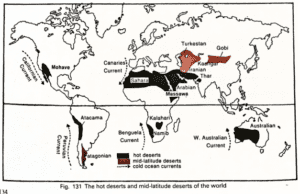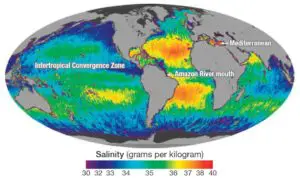Table of Contents
Exploring the Climatic Regions of India
India is a diverse country, full of various physical and cultural aspects. One of the most interesting topics to study in India is its climatic regions. The climatic regions of India have been extensively studied by scholars and experts using the Köppen system, which takes into account the monthly values of temperature and precipitation.
India Hosts Six Major Climatic Subtypes
India can be divided into six major climatic subtypes, each with its own unique characteristics and features. Let’s take a closer look at these climatic regions:
Tropical Climatic Regions of India
The tropical climatic regions of India include the tropical wet (Af), tropical wet and dry (Aw), and tropical monsoon (Am) climates. These regions have a mean monthly temperature throughout the year of over 18°C. Most of peninsular India, the Andaman and Nicobar Islands, and parts of northeastern India fall under this category. These regions experience high temperatures and abundant rainfall.
Dry Climatic Regions of India
The dry climatic regions of India include the arid (BWh) and semi-arid (BSh) climates. These regions have very low precipitation compared to the temperature, resulting in dry conditions. The Thar Desert in the west and parts of Gujarat, Rajasthan, Punjab, Haryana, and Karnataka fall under this category. These regions experience hot and dry weather, with very little rainfall.
Warm Temperature Climatic Regions of India
The warm temperature climatic regions of India include the subtropical humid (Cwa) and Mediterranean (Csa) climates. In these regions, the mean temperature of the coldest month is between 18°C and minus 3°C. Most of the northern plains, central India, and eastern India fall under this category. These regions have moderate temperatures and experience distinct seasons.
Cold Temperate Climatic Regions of India
The cold temperate climatic regions of India include the humid continental (Dfb) and subarctic (Dfc) climates. In these regions, the mean temperature of the warmest month is over 10°C, and the mean temperature of the coldest month is under minus 3°C. The Himalayan regions of Jammu and Kashmir, Himachal Pradesh, Uttarakhand, Sikkim, Arunachal Pradesh, and parts of Ladakh fall under this category. These regions experience cold weather and heavy snowfall.
Ice Climatic Regions of India
The ice climatic regions of India include the tundra (ET) and ice cap (EF) climates. In these regions, the mean temperature of the warmest month is under 10°C. The higher altitudes of the Himalayas and some parts of Ladakh fall under this category. These regions are characterized by extremely cold temperatures and permanent ice cover.
The Significance of Climatic Regions in India
The climatic regions of India play a crucial role in shaping the natural vegetation, wildlife, agriculture, culture, and economy of the country. Each region has its own unique features and challenges that require adaptation and innovation from its inhabitants.
Key Features of Indian Climatic Regions
– Tropical regions are characterized by high temperatures and abundant rainfall.
– Dry regions experience hot and dry weather, with little rainfall.
– Warm temperate regions have moderate temperatures and distinct seasons.
– Cold temperate regions have cold weather and heavy snowfall.
– Ice regions have extremely cold temperatures and permanent ice cover.
Objectives of Studying Climatic Regions of India
Studying the climatic regions of India helps us understand:
1. The impact of climate on agriculture: Different crops thrive in different climatic regions, and understanding these regions helps farmers make informed decisions regarding crop selection and farming techniques.
2. Biodiversity: Each climatic region supports a unique range of flora and fauna, and studying these regions helps in conserving and protecting the rich biodiversity of India.
3. Disaster Management: Different climatic regions experience different weather hazards, and understanding these regions helps in developing effective disaster management strategies.
4. Tourism: The diverse climatic regions offer a variety of experiences for tourists, from beach destinations to hill stations, attracting visitors from all over the world.
Effects of Climatic Regions in India
The climatic regions of India have both positive and negative effects on the country:
– Pros:
1. Agriculture and Livelihood: Favorable climatic regions support agriculture, providing livelihood opportunities for millions of farmers.
2. Tourism: The diverse climatic regions attract domestic and international tourists, contributing to the economy.
3. Biodiversity Conservation: Different climatic regions support a rich variety of flora and fauna, contributing to the conservation of biodiversity.
4. Cultural Diversity: The climatic regions influence the culture and traditions of the people living in different parts of India, adding to its cultural diversity.
– Cons:
1. Climate Change Vulnerability: Climate change is affecting different climatic regions of India differently, making some regions more vulnerable to extreme weather events like droughts, floods, and heatwaves.
2. Agricultural Challenges: Changing climatic patterns pose challenges for farmers, making it difficult to predict and plan agricultural activities effectively.
3. Water Scarcity: Some climatic regions, particularly the arid and semi-arid regions, face water scarcity issues, affecting agriculture, livelihoods, and overall development.
Fun Fact
Did you know that India is home to a wide range of climates and landscapes within its borders? From the deserts in the west to the snowy Himalayas in the north, India offers a remarkable diversity of climates, making it a fascinating country to study and explore.
In conclusion, studying the climatic regions of India provides valuable insights into the country’s natural and cultural diversity. Understanding these regions helps in various aspects, including agriculture, tourism, disaster management, and conservation. While there are both positive and negative effects of these regions, they contribute to the unique and vibrant fabric of India.
Mutiple Choice Questions
1. Which system is used to classify the climatic regions of India?
a) Fibonacci system
b) Kelvin system
c) Köppen system
d) Newton system
Explanation: The Köppen system is used to classify the climatic regions of India based on monthly values of temperature and precipitation.
2. How many major climatic subtypes does India host?
a) three
b) four
c) five
d) six
Explanation: India hosts six major climatic subtypes.
3. Which climatic regions are characterized by a mean monthly temperature over 18°C throughout the year?
a) dry climatic regions
b) cold temperate climatic regions
c) ice climatic regions
d) tropical climatic regions
Explanation: Tropical climatic regions are characterized by a mean monthly temperature over 18°C throughout the year.
4. Which region of India falls under the category of tropical climatic regions?
a) the Thar Desert
b) central India
c) Ladakh
d) northeastern India
Explanation: Peninsular India, the Andaman and Nicobar Islands, and parts of northeastern India fall under the category of tropical climatic regions.
5. Which climatic regions have very low precipitation compared to the temperature?
a) tropical climatic regions
b) warm temperature climatic regions
c) dry climatic regions
d) cold temperate climatic regions
Explanation: Dry climatic regions have very low precipitation compared to the temperature.
6. Which climatic regions include the Thar Desert in the west and parts of Gujarat, Rajasthan, Punjab, Haryana, and Karnataka?
a) tropical climatic regions
b) warm temperature climatic regions
c) dry climatic regions
d) cold temperate climatic regions
Explanation: The Thar Desert in the west and parts of Gujarat, Rajasthan, Punjab, Haryana, and Karnataka fall under the category of dry climatic regions.
7. In which climatic regions does the mean temperature of the warmest month exceed 10°C and the mean temperature of the coldest month is below -3°C?
a) dry climatic regions
b) cold temperate climatic regions
c) ice climatic regions
d) warm temperature climatic regions
Explanation: Cold temperate climatic regions have a mean temperature of the warmest month over 10°C and a mean temperature of the coldest month under -3°C.
8. Which regions of India fall under the category of cold temperate climatic regions?
a) Ladakh and parts of Ladakh
b) northeastern India
c) central India
d) the Thar Desert
Explanation: The Himalayan regions of Jammu and Kashmir, Himachal Pradesh, Uttarakhand, Sikkim, Arunachal Pradesh, and parts of Ladakh fall under the category of cold temperate climatic regions.
9. Which climatic regions are characterized by a mean temperature of the warmest month below 10°C?
a) dry climatic regions
b) ice climatic regions
c) warm temperature climatic regions
d) tropical climatic regions
Explanation: Ice climatic regions are characterized by a mean temperature of the warmest month below 10°C.
10. How do the Himalayas influence the climatic regions of India?
a) by attracting moisture-laden winds from the southwest
b) by moderating the temperature and humidity of the coastal regions
c) by acting as a barrier to cold winds from Central Asia
d) by bringing rainfall to most parts of India during summer
Explanation: The Himalayas act as a barrier to the cold winds from Central Asia, keeping most of India warm or mildly chilly in winter.
11. What is the impact of climatic regions on the natural vegetation, wildlife, agriculture, culture, and economy of India?
a) no impact
b) minimal impact
c) significant impact
d) temporary impact
Explanation: The climatic regions of India have a significant impact on the natural vegetation, wildlife, agriculture, culture, and economy of the country.
12. Which system is used to classify the climatic regions of the world?
a) Fibonacci system
b) Kelvin system
c) Köppen system
d) Newton system
Explanation: The Köppen system is also used to classify climatic regions of the world.
Brief Summary | UPSC – IAS
This article explains the six major climatic regions of India based on the Köppen system. The tropical regions include the wet, wet and dry, and monsoon climates. Dry regions consist of arid and semi-arid climates, while warm temperate regions include subtropical humid and Mediterranean climates. Cool temperate regions comprise humid continental and subarctic climates, and ice climates are found in high altitudes. Factors such as the Himalayas, Thar Desert, Indian Ocean, and monsoon winds influence the country’s climatic regions. These regions have a significant impact on vegetation, wildlife, agriculture, culture, and economy, requiring adaptation and innovation from inhabitants.



